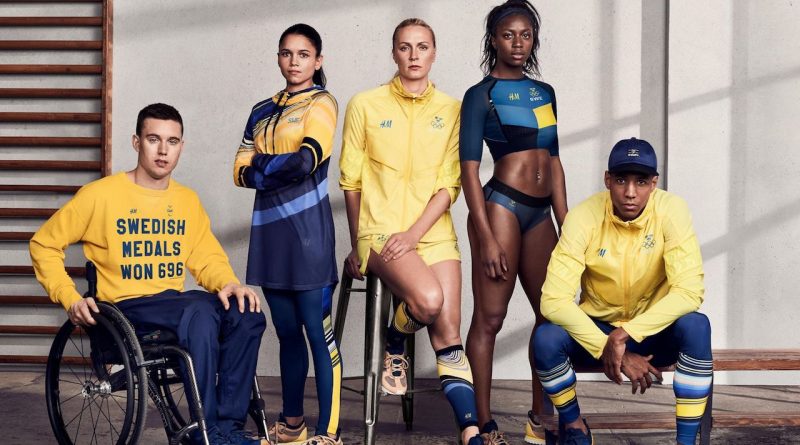How fashion brands plan to establish a diverse workforce and inclusive culture – Glossy
It’s easy for brands to say they want a more diverse workforce and more inclusive culture, but it’s much harder to actually achieve those goals. So for brands that want to make a tangible difference, where are they starting?
This week, brands, independent groups like the CFDA and black fashion workers told Glossy that one of the most important things brands can do is set measurable goals with specific targets. But beyond that, there are a number of steps brands are taking and plan to take in the future.
Support black businesses
Last week, Aurora James, model and founder of fashion brand Brother Vellies, created the 15% Pledge, asking fashion retailers to ensure that at least 15% of their shelf space is dedicated to black-owned brands. On Wednesday, beauty retailer Sephora was the first major retailer to take this pledge. James also called for Net-a-Porter and Saks Fifth Avenue to sign on, but neither have responded to the pledge.
“Black people spend billions of dollars in this country every year at major retailers, but represent an insignificant fraction of how those companies allocate their purchasing power,” James said in a statement announcing the pledge. “We are calling for equal representation on shelves and hangers.”
James said commitments like this are more difficult than just a one-off donation, but will have a more effective and long-lasting impact on the longevity of black-owned fashion brands. Black-owned business make up 40% of the businesses that have closed down to coronavirus, compared to less than 20% white-owned businesses, according to an annual business survey by the National Bureau of Economic Research.
Seeking diverse talent
The CFDA has said it’s creating an in-house employment program that will help black talent find jobs in the fashion world and a mentorship program for black students looking to gain experience in the fashion world. These programs are still in the planning stages.
Amber Tolliver, founder of the lingerie brand Liberte, said that as a black founder, she’s ensured her own team (usually around 15 people, but temporary furloughs have brought it down to three) is very diverse. She said all brands should also consider whether the companies they work with are on the same page. Fashion brands have the power to push their partners, whether that’s manufacturers or marketing agencies, to improve their own diversity programs.
“It’s not just about your team,” Tolliver said. “If your agency only hires white models, that’s a problem too. I know from being a model which brands hired black models and which ones didn’t, and which ones were overtly anti-people-of-color. It can’t just be about hiring practices. It has to permeate through every level of your business.”
Setting measurable goals and following through is key. Macy’s, for example, last year instituted a new rule that all marketing imagery must maintain at least 50% representation of different genders identities, ethnicities and able-bodiedness, as well as a 30% goal for senior leadership in the next five years.
Building a culture of diversity
Ashley Walker, a longtime fashion photographer and founder of the Los Angeles apparel brand Leimert Park Threads, said that once a diverse workforce has been achieved, it’s important for brands to build a culture where employees of color feel like they are valued.
For example, one of the major criticisms of Reformation this week was that the brand fostered a culture where black employees felt ignored and regularly passed over. Reformation said it is starting a diversity board and adding diversity data to its annual sustainability report that comes out each year, but declined to offer more specific details on what those metrics will be.
“You can talk to current employees,” Walker said. “I’ve always believed in changing from within. You can start a women’s group, or a LGBTQ group or a people of color group at your company to give them a stronger voice to talk about issues they see within the company. Nobody knows the company better than people who already work there. So listen to them, and you can make some big changes.”
Companies like H&M have created new programs that go beyond standard unconscious bias training. Ezinne Kwubiri, H&M’s North American head of inclusion and diversity, instituted a program at the company this year called Layers. It’s a regular monthly workshop hosted internally that educates both corporate employees and executives on how a lack of diversity impacts the entire business, plus it encourages discussion and reflection across departments about how to support employees of color. H&M declined to give specific numbers around how Layers has impacted hiring and retention of POC employees, but it shared that the program will soon be rolled out to retail employees as well.
Kwubiri said, before hiring any new employees, she’s made reflecting on the company culture and support for current employees of color a priority.
“We are definitely paying attention to the departments that are most homogeneous,” Kwubiri said. “But it’s less about saying ‘We need this number of people of color in this department.’ It’s more about asking ourselves: Are we reflecting diversity in our product? What about in the body types and sizes we show? How are we supporting diversity in our community? Are our partners supporting diversity? I believe when you do those things, you will organically attract diverse talent, too.”




:quality(85):upscale()/2023/08/31/945/n/1922564/e32c356064f1091fda0208.87450446_.jpg)
